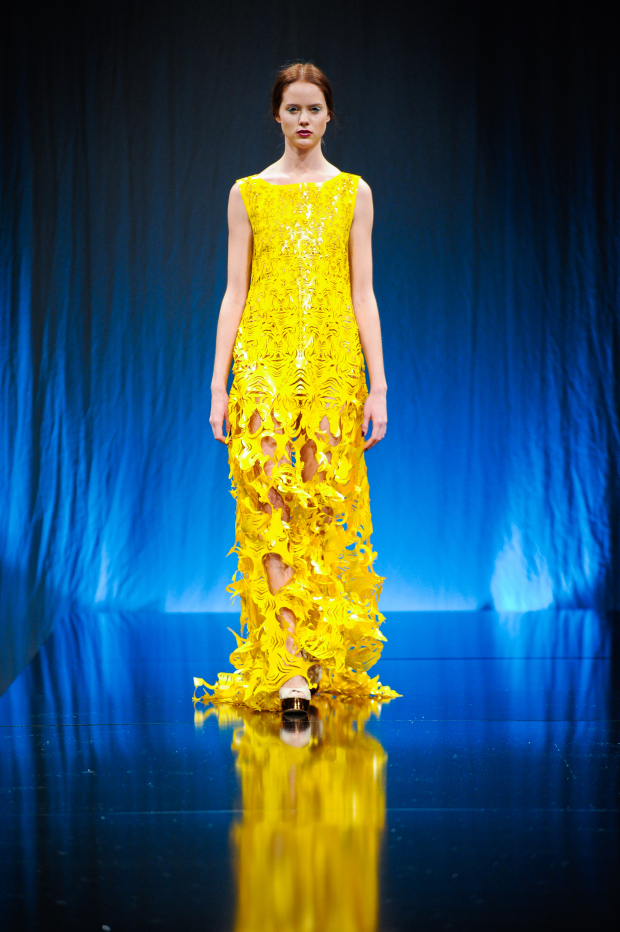
KUNIHIKO MORINAGA AND MAMORU HOSODA
DIMENSION
Mamoru Hosoda collaborated with Morinaga to create this great collection film. It begins with the formation of the clothes as Morinaga designed them, not through cut and drape but via cut and paste, and we see the garments as digital toiles made up of fractal contours true to the representation of futuristic facades stretching back to Metropolis and Tron. Then the dresses form more tangibly, but still in 2D, filling those vectored spaces with the angled jigsaw of reclaimed denim, chino cotton, and gabardine, plus reflective material (all seamlessly bonded) from which they are made. It slowly becomes kind of clear that we are seeing a fashion show in U, the virtual world which Belle’s heroine inhabits—and that it is also being streamed on U’s equivalent of YouTube. There are rooms within rooms within rooms.
.
仮想世界は二次元。非日常の世界。現実世界は三次元。日常の世界。仮想とは、現実にはない世界を仮にあるものとして考えてみること。現実とは、事実として目の前にあらわれている世界そのもの。2022年春夏コレクション「DIMENSION」は二次元と三次元を越境する。画面の中の世界は二次元。細田守監督最新作「竜とそばかすの姫」のアニメーションの世界。劇中に存在する仮想空間’’U’’でコレクションが幕を開ける。CGアバターモデルが、宙に浮くガラスのランウェイを歩く。画面の外の世界は現実。‘’U’’が投影された真っ白な空間を、実在のモデルが歩く。コロナ禍がもたらしたデジタルのファッションショーは、軽々と世界の距離を縮め、すべてをフラットにした。画面の中では、立体と平面の区別はなくフラット。画面の中と外の境界もまた、消えていく。画面の外で纏うだけでなく、画面の中でも纏うことができる。



